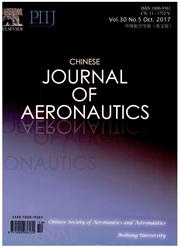

 中文摘要:
中文摘要:
热障碍涂层(TBC ) 主要被用于先进汽轮机引擎的热部件绝缘从热气体的部件。热电导率上的 sintering 的效果和喷洒的常规血浆和 nanostructured 氧化钇的热障碍效果稳定了氧化锆(YSZ ) 热障碍涂层(TBC ) 被调查。热电导率的显著增加在热处理以后发生到两典型涂层。孔的变化只是反面。增加更急速地与常规血浆的相比与退火预定的 nanostructured 氧化锆涂层的谷物尺寸喷洒了涂层,它显示涂层 sintering 比常规涂层的做更多的贡献到 nanostructured 涂层的热传导性。用温度差别技术的热障碍效果测试在两涂层上被执行。在热处理和衰落在低热传导性范围似乎更激烈以后,热障碍效果随热电导率的增加减少。在热障碍效果的衰落是大约 80 駜吗??
 英文摘要:
英文摘要:
Thermal barrier coatings (TBCs) are mostly applied to hot components of advanced turbine engines to insulate the compo- nents from hot gas. The effect of sintering on thermal conductivity and thermal barrier effects of conventional plasma sprayed and nanostructured yttria stabilized zirconia (YSZ) thermal barrier coatings (TBCs) are investigated. Remarkable increase in thermal conductivity occurs to both typical coatings after heat treatment, The change of porosity is just the opposite. The grain size of the nanostructured zirconia coating increases more drastically with annealing time compared to that of the conventional plasma sprayed coating, which indicates that coating sintering makes more contributions to the thermal conductivity of the nanostructured coating than that of the conventional coating. Thermal barrier effect tests using temperature difference technique are performed on both coatings. The thermal barrier effects decrease with the increase of thermal conductivity after heat treat- ment and the decline seems more drastic in low thermal conductivity range. The decline in thermal barrier effects is about 80℃ for nanostructured coating after 100 h heat treatment, while the conventional coating reduces by less than 60 ℃ compared to the as-sprayed coating.
 同期刊论文项目
同期刊论文项目
 同项目期刊论文
同项目期刊论文
 Residual stress trend in thermal barrier coatings in through thickness direction measured by photolu
Residual stress trend in thermal barrier coatings in through thickness direction measured by photolu An impedance spectroscopy study of high-temperature oxidation of Gd2O3-Yb2O3 codoped zirconia therma
An impedance spectroscopy study of high-temperature oxidation of Gd2O3-Yb2O3 codoped zirconia therma Improved oxidation resistance and diffusion barrier behaviors of gradient oxides doped NiCoCrAlY coa
Improved oxidation resistance and diffusion barrier behaviors of gradient oxides doped NiCoCrAlY coa Mechanical Properties of LaTi2Al9O19 and Thermal Cycling Behaviors of Plasma-Sprayed LaTi2Al9O19/YSZ
Mechanical Properties of LaTi2Al9O19 and Thermal Cycling Behaviors of Plasma-Sprayed LaTi2Al9O19/YSZ Mechanical Properties of LaTi(2)Al(9)O(19) and Thermal Cycling Behaviors of Plasma-Sprayed LaTi(2)Al
Mechanical Properties of LaTi(2)Al(9)O(19) and Thermal Cycling Behaviors of Plasma-Sprayed LaTi(2)Al Microstructure and Thermal Properties of Plasma Sprayed Thermal Barrier Coatings from Nanostructured
Microstructure and Thermal Properties of Plasma Sprayed Thermal Barrier Coatings from Nanostructured HOT-CORROSION BEHAVIOR OF THERMAL BARRIER COATED DZ125 SUPERALLOY EXPOSED TO ATOMIZED SEAWATER AND K
HOT-CORROSION BEHAVIOR OF THERMAL BARRIER COATED DZ125 SUPERALLOY EXPOSED TO ATOMIZED SEAWATER AND K Thermo-Physical Properties and Thermal Shock Resistance of Segmented La2Ce2O7/YSZ Thermal Barrier Co
Thermo-Physical Properties and Thermal Shock Resistance of Segmented La2Ce2O7/YSZ Thermal Barrier Co Thermal shock resistance and mechanical properties of La2Ce2O7 thermal barrier coatings with segment
Thermal shock resistance and mechanical properties of La2Ce2O7 thermal barrier coatings with segment Thermo-physical and thermal cycling properties of plasma-sprayed BaLa2Ti3O10 coating as potential th
Thermo-physical and thermal cycling properties of plasma-sprayed BaLa2Ti3O10 coating as potential th Lanthanum-titanium-aluminum oxide: A novel thermal barrier coating material for applications at 1300
Lanthanum-titanium-aluminum oxide: A novel thermal barrier coating material for applications at 1300 Thermal cycling behavior and failure mechanism of LaTi(2)Al(9)O(19)/YSZ thermal barrier coatings exp
Thermal cycling behavior and failure mechanism of LaTi(2)Al(9)O(19)/YSZ thermal barrier coatings exp Cyclic oxidation and interdiffusion behavior of a NiAlDy/RuNiAl coating on a Ni-based single crystal
Cyclic oxidation and interdiffusion behavior of a NiAlDy/RuNiAl coating on a Ni-based single crystal Oxidation and diffusion barrier behaviors of double-layer NiCoCrAlY coatings produced by plasma acti
Oxidation and diffusion barrier behaviors of double-layer NiCoCrAlY coatings produced by plasma acti Microstructure and thermo-physical properties of yttria stabilized zirconia coatings with CMAS depos
Microstructure and thermo-physical properties of yttria stabilized zirconia coatings with CMAS depos 期刊信息
期刊信息
